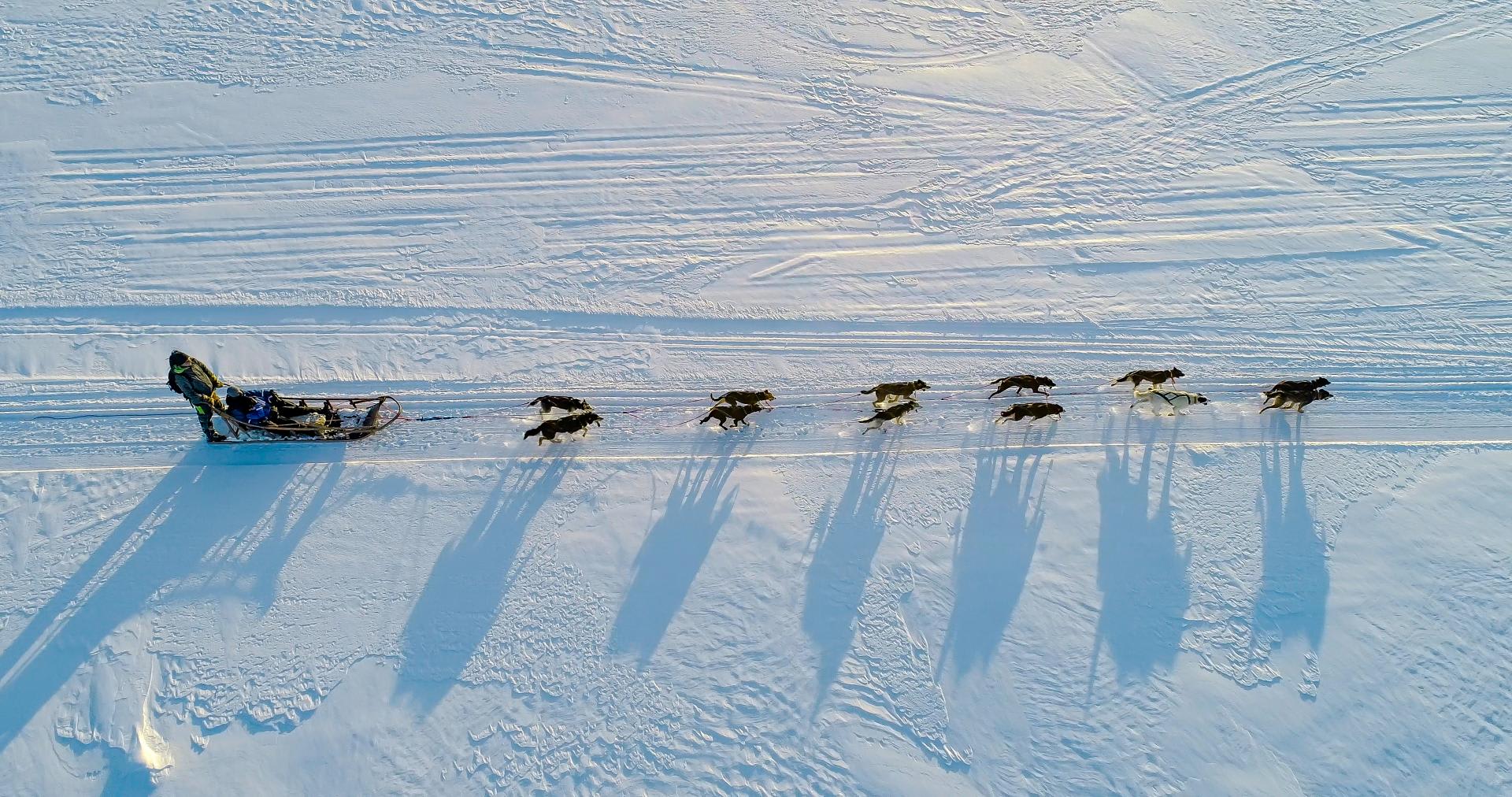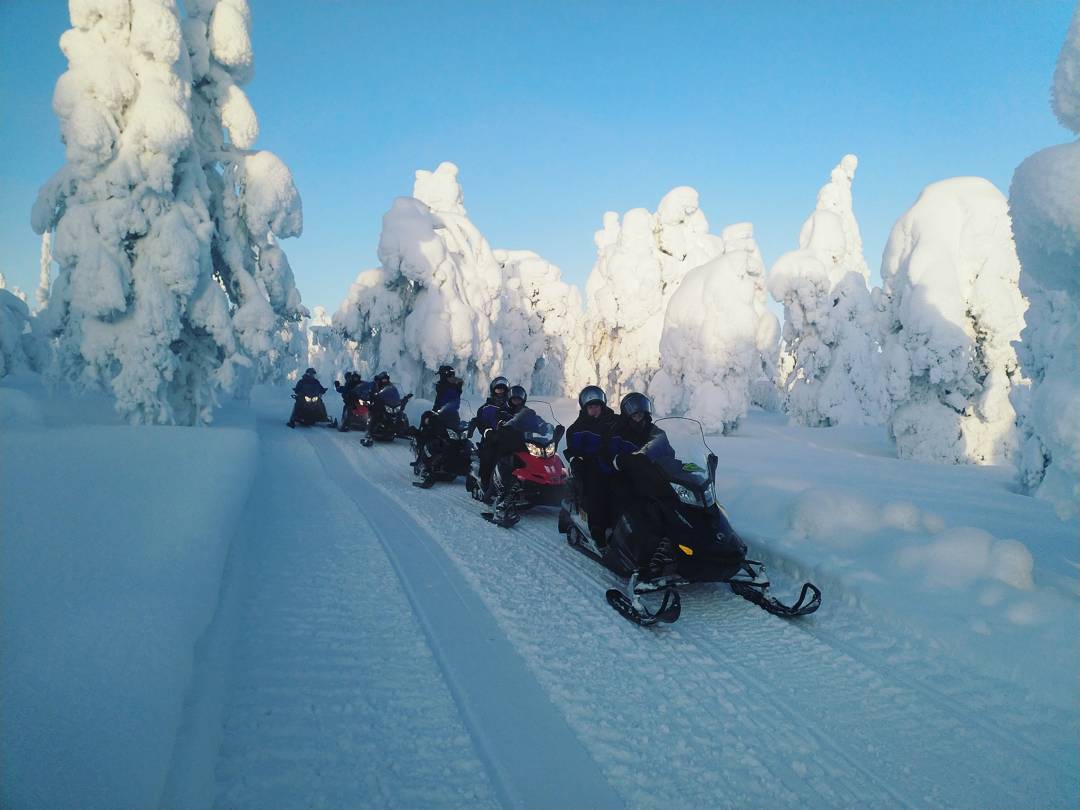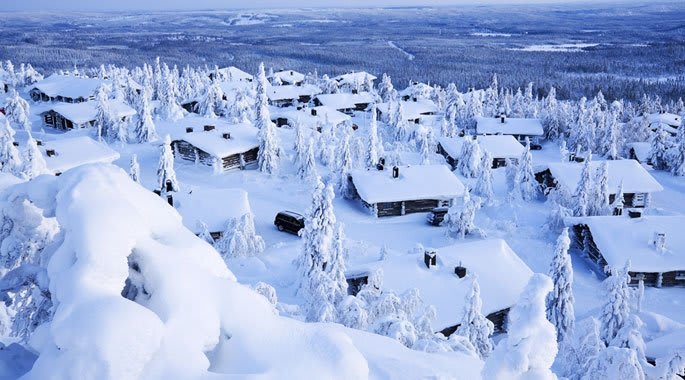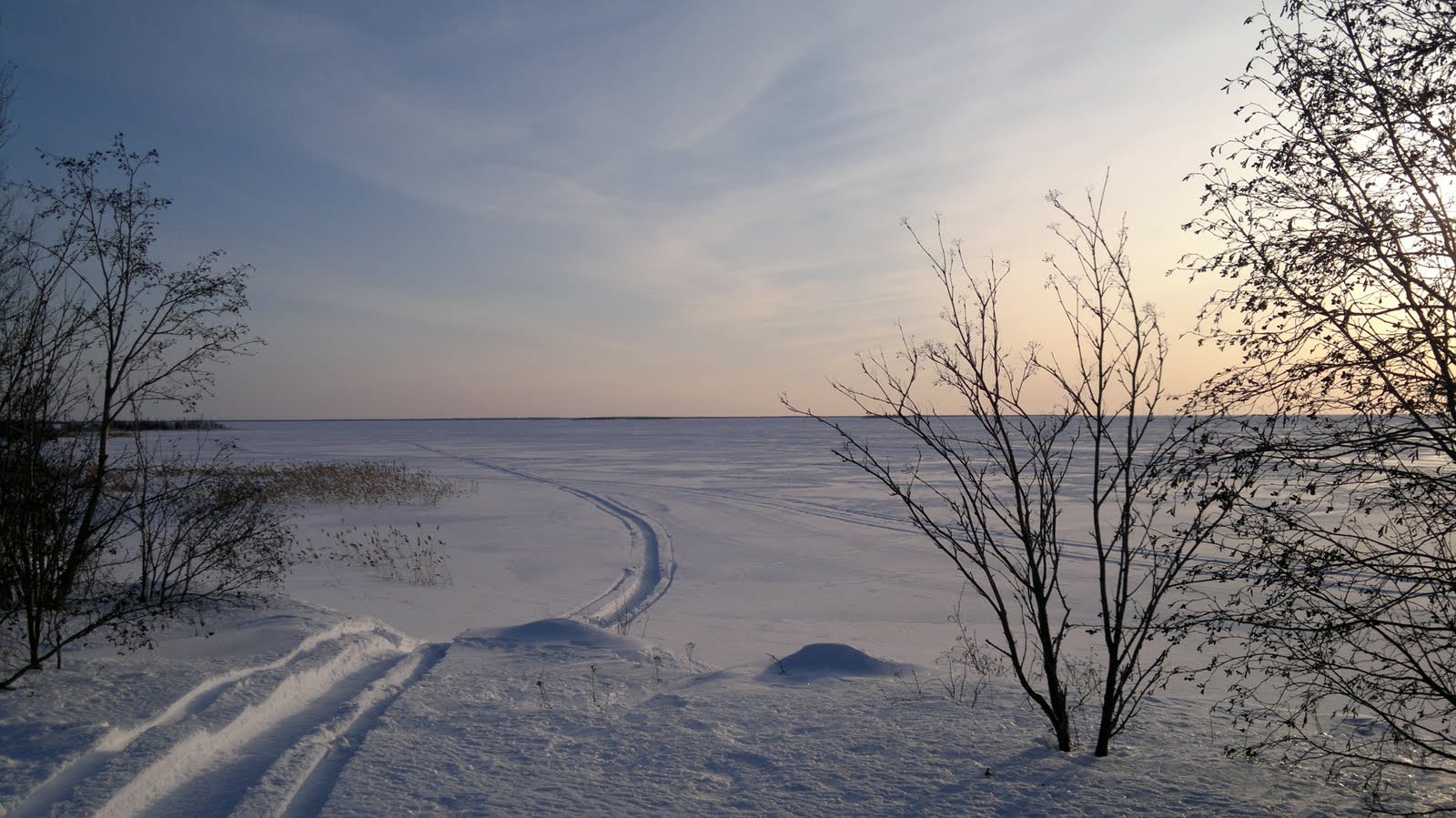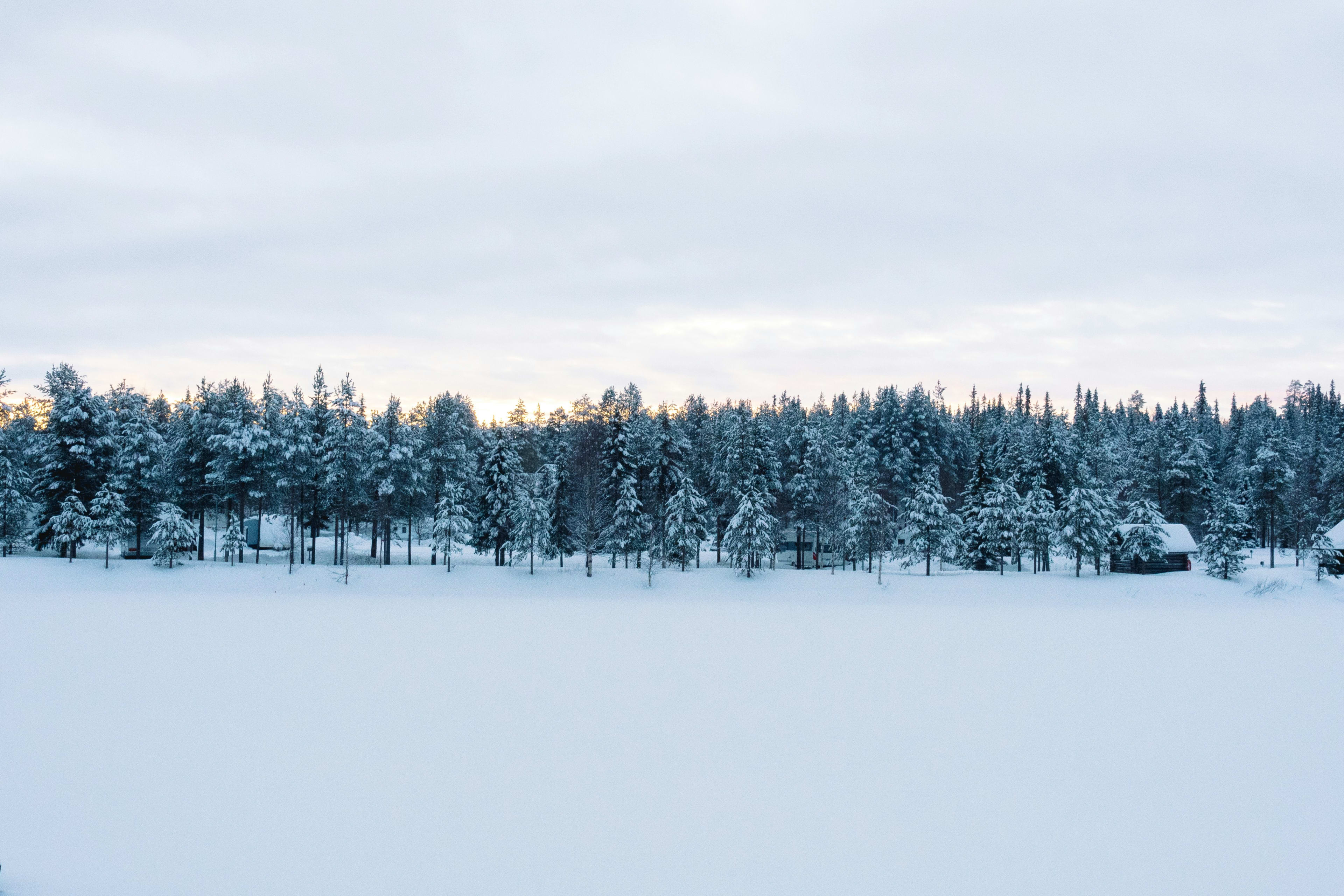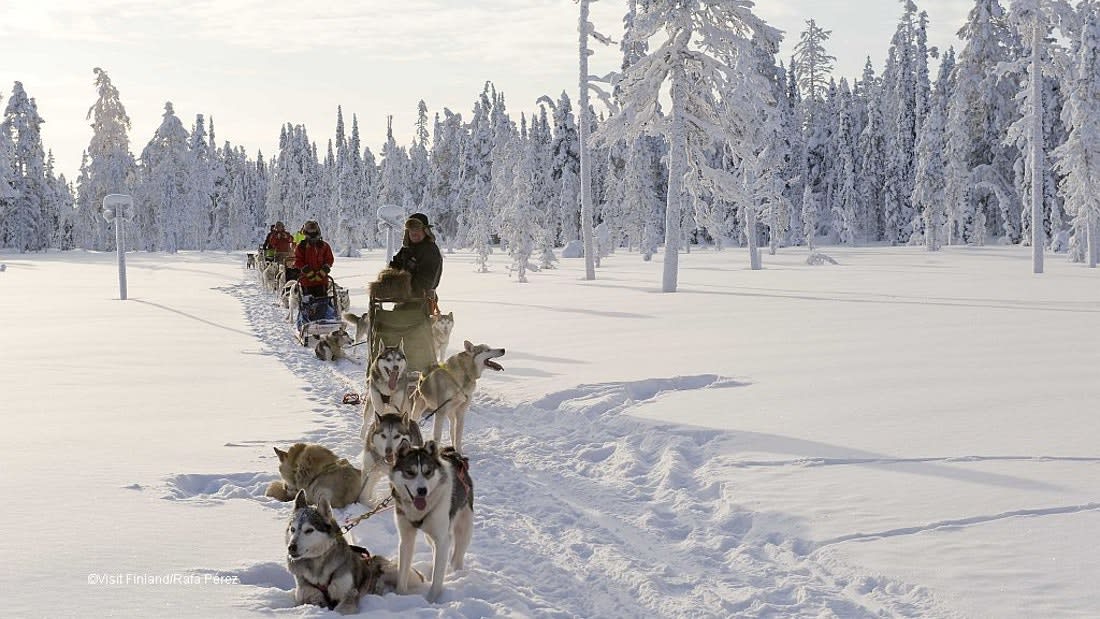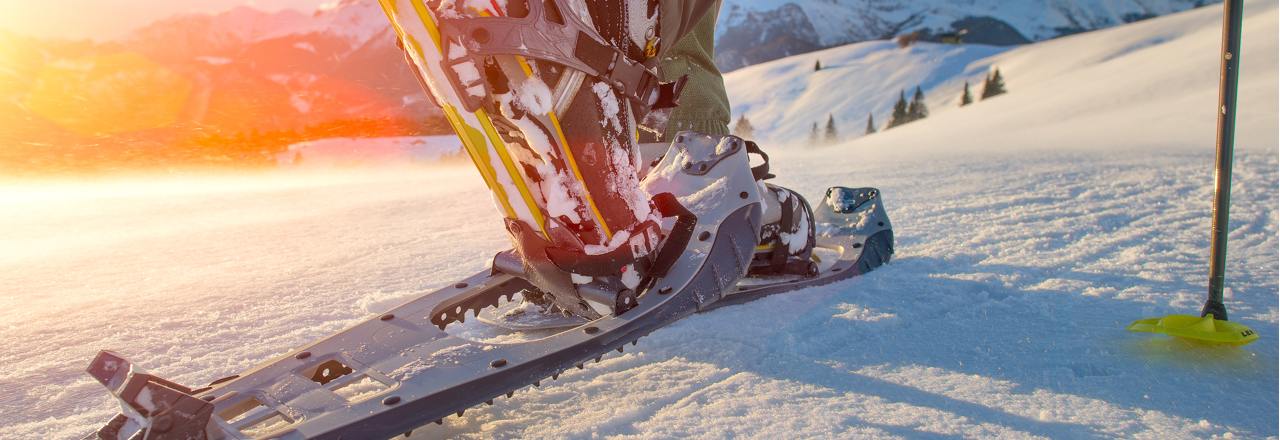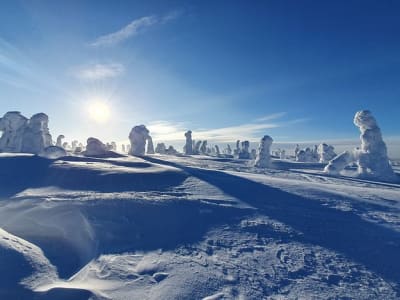
The best outdoor activities in Riisitunturi National Park
All our activities in Riisitunturi National Park

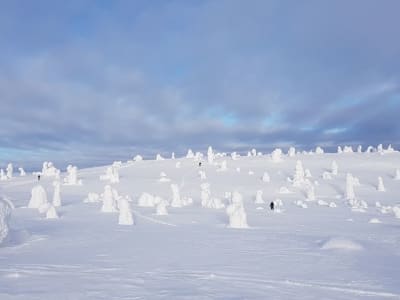
Sunrise Snowshoe Excursion in the Riisitunturi National Park

Magical Snowshoe Excursion in the Riisitunturi National Park

Sunrise Snowshoe Excursion in the Riisitunturi National Park
Nestled in the heart of Finnish Lapland, Riisitunturi National Park is a pristine winter wonderland renowned for its breathtaking snowy landscapes and tranquil atmosphere. This protected area offers travellers a unique opportunity to immerse themselves in untouched nature, where snow-laden trees and rolling fells create a magical setting. Whether you are seeking adventure or serenity, Riisitunturi National Park stands out as a top destination for unforgettable outdoor experiences. With expert local guides leading snowshoe excursions at sunrise and under the enchanting northern skies, you are invited to discover the true essence of Finnish wilderness in one of the country’s most captivating national parks.
Must-do activities in Riisitunturi National Park
Riisitunturi National Park is celebrated for its exceptional snowshoeing experiences, making it a must-visit for anyone eager to explore Lapland’s winter beauty. The Sunrise Snowshoe Excursion in Riisitunturi National Park is a highlight for early risers and photography enthusiasts. Guided by a local professional, you will trek through silent forests and ascend gentle slopes just as the first light paints the snow in pastel hues. This excursion offers a peaceful start to the day, with panoramic views over the fells and a chance to witness the park’s unique “tykky” trees—spruce trees heavily coated in snow and ice.
For those seeking a touch of enchantment, the Magical Snowshoe Excursion in Riisitunturi National Park is an unmissable experience. Led by an expert guide, you will venture into the park’s heart, surrounded by snow-draped landscapes that seem straight out of a fairy tale. The excursion is designed to immerse you in the quiet majesty of the Arctic wilderness, often timed to coincide with the soft glow of twilight or the possibility of witnessing the northern lights. Both activities are suitable for all levels, offering a safe and memorable way to connect with nature and discover the serene beauty of Riisitunturi.
When to visit Riisitunturi National Park?
The best time to visit Riisitunturi National Park for snowshoeing adventures is from late November to early April, when the region is blanketed in deep, powdery snow. During these months, the park transforms into a winter paradise, with temperatures typically ranging from -5°C to -20°C. December and January offer the magical polar night, where the sun barely rises and the landscape glows in soft blue and pink tones—ideal for sunrise excursions. February and March bring longer days and increased chances of clear skies, perfect for magical snowshoe walks and potential sightings of the northern lights. While summer reveals a different side of the park, the signature snowshoe experiences are exclusive to the winter season, ensuring a truly authentic Lapland adventure.
Practical Information in Riisitunturi National Park
Riisitunturi National Park is located in Finnish Lapland, approximately 60 kilometres from the town of Kuusamo. The park is easily accessible by car, with well-maintained roads leading to the main entrance and parking area. For snowshoe excursions, all necessary equipment—including snowshoes and poles—is typically provided by your local professional guide. It is recommended to dress in warm, layered clothing suitable for Arctic conditions, including thermal underlayers, insulated jackets, gloves, and hats. Most guided tours include a safety briefing and are tailored to suit various fitness levels, making them accessible to beginners and experienced adventurers alike. Facilities in the park are minimal, so bringing snacks and water is advisable. Always check weather conditions before your visit and book your excursion in advance to secure your spot.
Ready to experience the magic of Riisitunturi National Park? Book your unforgettable snowshoe adventure with a certified local guide on Manawa today!
Customer feedback on Riisitunturi National Park
You're in good hands with Manawa.
We are dedicated to make your outdoor activities extraordinary. Benefit from expert advice, friendly service, and live unforgettable moments with Manawa.
